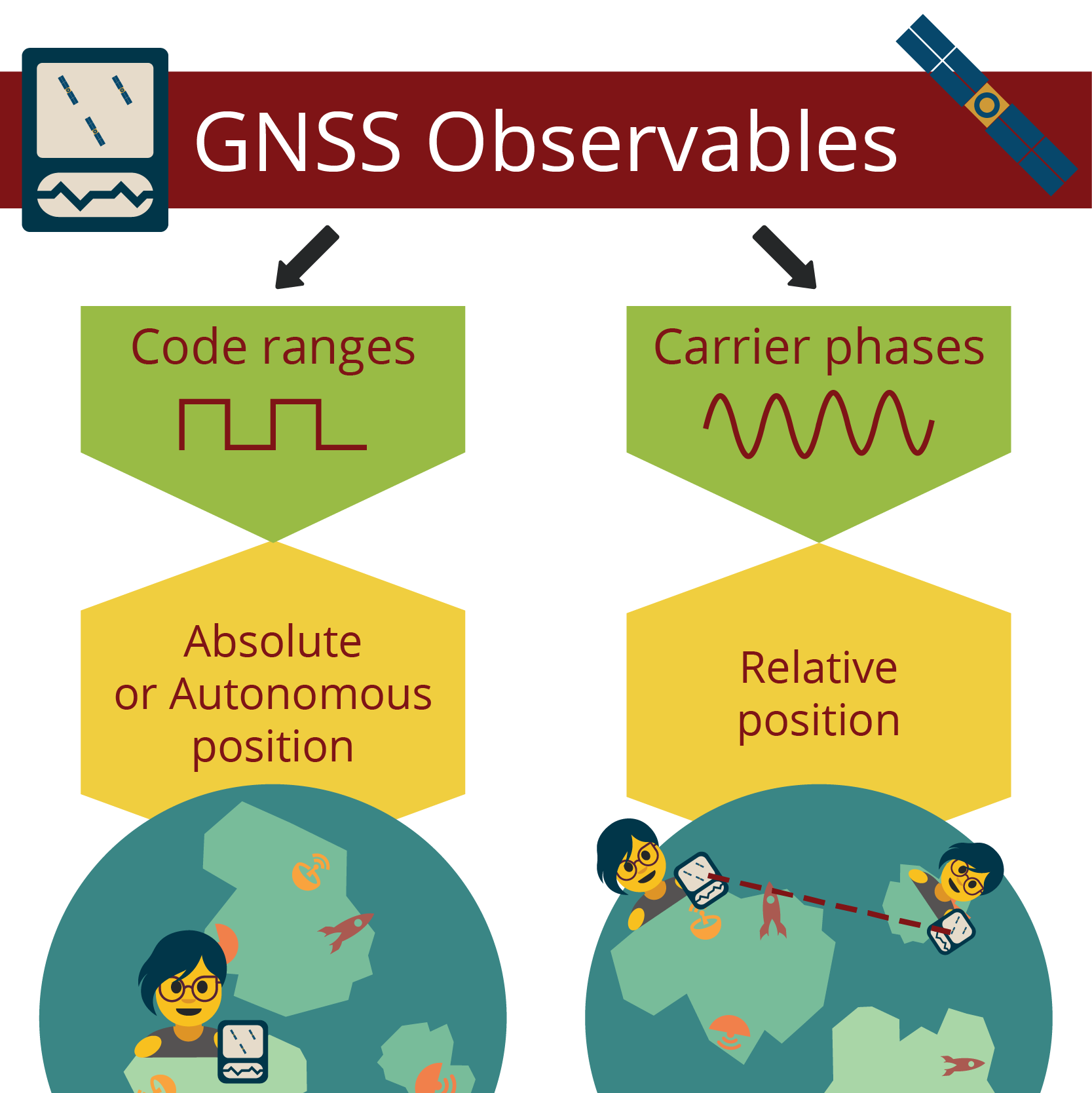3.6 GNSS Accuracy
The two components of GNSS signals allow us to generate positioning information in different ways, as shown in Figure 3.6(a).
The code section of the signal, referred to as the code observable, gives us the first two levels of accuracy – point positioning and DGPS:
- Point positioning – this is normally done with a device that has a low cost single frequency GPS chip. It can achieve an accuracy of ±10m relatively quickly, and uses code observations, which are discussed in Chapter 4.
- Differential range positioning, known more commonly as Differential GPS, or DGPS. This technique also uses low cost, single frequency receivers. One receiver is set up on a known point – this is called the base station, while the other receiver is used to collect positions of points. The information collected at both sites is used to determine corrections for the GNSS errors that can be applied to the collected data in real time, or afterwards, called post processing. DGPS is generally accurate to 0.5-5m relative to the known point. This method also uses code observations, and is discussed in Chapter 5.
The carrier section, referred to as the phase observable, gives us the last level:
- High precision GNSS surveying – This technique requires more sophisticated multiple frequency receivers, collecting phase data from the carrier wave part of the signal from satellites. This data is used to determine the three dimensional positions of multiple points relative to each other, called baselines. These baselines can have precisions of better than five parts per million, giving us millimetre to centimetre accuracies. This is discussed in Chapter 6.


